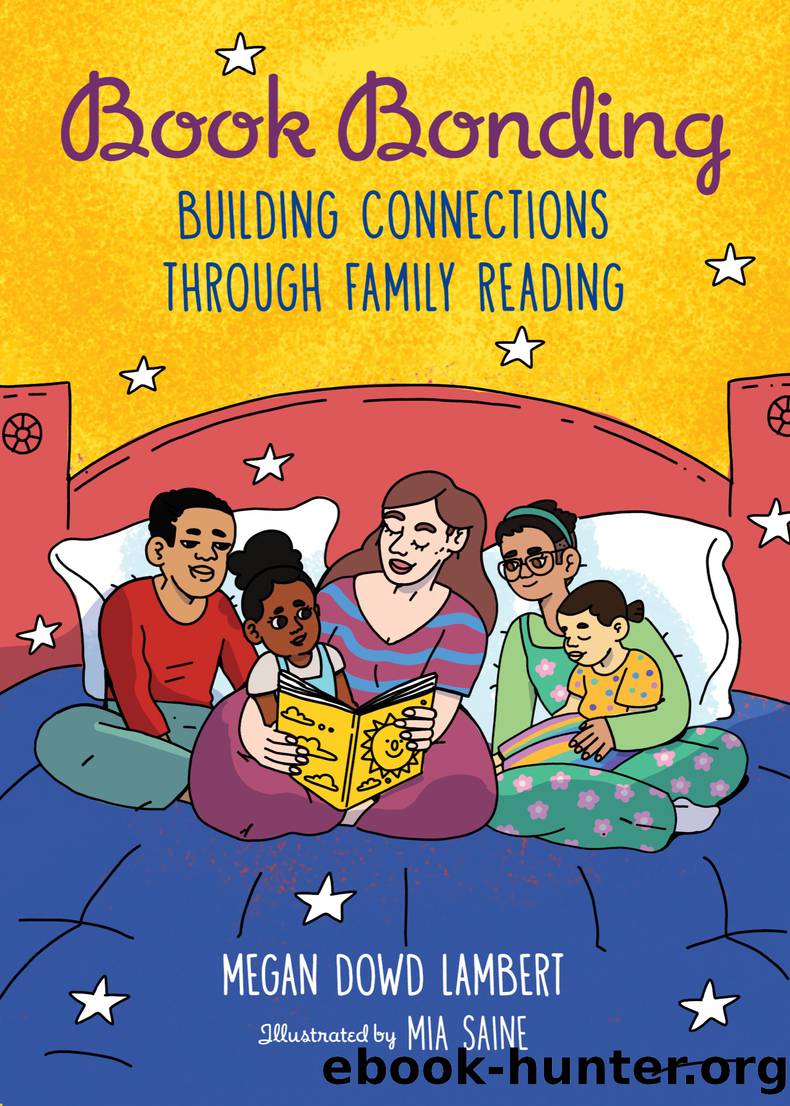Book Bonding: Building Connections Through Family Reading by Megan Dowd Lambert

Author:Megan Dowd Lambert [Lambert, Megan Dowd]
Language: eng
Format: epub
Publisher: Charlesbridge
Published: 2023-04-18T00:00:00+00:00
Most of this piece originated as a post for the Horn Bookâs 2018 Calling Caldecott blog, where (after some careful reflection) I was delighted to support Marcy Campbell and Corinna Luykenâs Adrian Simcox Does NOT Have a Horse. Iâve expanded that post to include how talking with my son about his eighth-grade class reading of Harper Leeâs To Kill a Mockingbird served as a backdrop for my thinking about this picture book.
My son Stevieâs response to Harper Leeâs To Kill a Mockingbird when he read it in his eighth-grade English class was akin to that of writer and scholar Dr. Roxane Gay, who wrote in the New York Times in 2018, âPerhaps I am ambivalent because I am black. I am not the target audience. I donât need to read about a young white girl understanding the perniciousness of racism to actually understand the perniciousness of racism. I have ample first-hand experience.â
Stevie was aghast at his white classmatesâ naivete. âTheyâre just like Jem!â he said incredulously, referencing protagonist Scoutâs older brother. âHow could they be surprised that Tom Robinson [a Black man falsely accused of raping a white woman] gets convicted?â
He went on to rail against the text and (among other things) asserted a powerful critique about its ahistorical scene when three white children, Scout, Dill, and Jem, turn back a lynch mob.
âThatâs not realistic!â he said. âI mean, if it was that easy, then maybe all those Black people wouldnât have been killed.â
Stevie and I talked about how the scene provides a white savior, which creates wish fulfillment for white readers. Hey, look at these white kids doing the right thing, and look at those white grown-ups changing. But the dishonesty at the heart of the scene is dismaying at best to a reader like my son. It offers him the opposite of empathy, as it roundly dismisses his understanding of the history of lynching in the United States.
âWhy do people talk about this book like itâs all about being against racism?â Stevie said during another conversation. âItâs not even really about the Black people in the story. Itâs about all the white people.â
He had a point. A former graduate student of mine, Autumn Allen, wrote in the journal Research on Diversity in Youth Literature in 2020 about an oft-quoted line from Scoutâs father, Atticus Finch: âYou never really understand a person until you consider things from his point of viewâ¦until you climb into his skin and walk around in it.â She pointed out that the line is not aimed at getting Scout and Jem to empathize with Black people like Tom Robinson; his wife, Helen; and the Finch familyâs maid, Calpurnia. No, Autumn clarified, Atticus means that the children should try to understand Boo Radley, who is ostracized but not persecuted, and who is white. This is just one way that Black characters are marginalized and silenced in this book, so they end up serving as vehicles for white charactersâ (incremental) growth.
Stevieâs teacher, Michael Lawrence-Riddell, was a white,
Download
This site does not store any files on its server. We only index and link to content provided by other sites. Please contact the content providers to delete copyright contents if any and email us, we'll remove relevant links or contents immediately.
Teach Your Child How to Think by Edward De Bono(1869)
Little Soldiers by Lenora Chu(1157)
NLP For Parents by Judy Bartkowiak(986)
The Book of Virtues by William J. Bennett(911)
Happy Is the Bride by Lori Wilde(879)
Lost at School by Ross W. Greene(846)
The Enlightened College Applicant by Andrew Belasco & Dave Bergman(830)
LESSONS_IN_LOVE by Administrator(815)
The Homeschooling Handbook by Mary Griffith(806)
Living Out Loud by Anna Quindlen(764)
What to Expect the First Year by Heidi Murkoff(745)
The New Sex Bible by Jessica O'Reilly(739)
Math with Bad Drawings: Illuminating the Ideas That Shape Our Reality by Ben Orlin(720)
The Gift of Failure by Jessica Lahey(719)
Dotcom Secrets by Russell Brunson(706)
The Most Important Year by Suzanne Bouffard(704)
Weapons of Mass Instruction by John Taylor Gatto(701)
What to Expect the Second Year by Heidi Murkoff & Sharon Mazel(696)
The Physics Book by DK(682)
